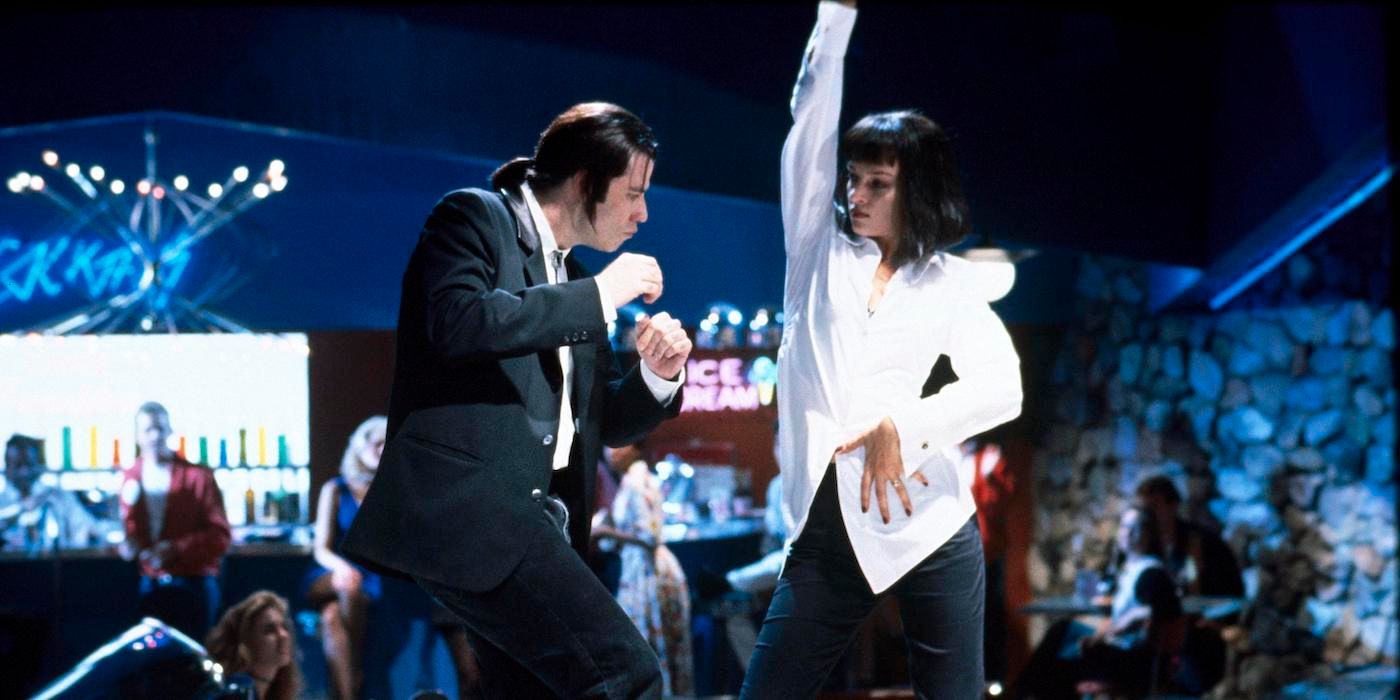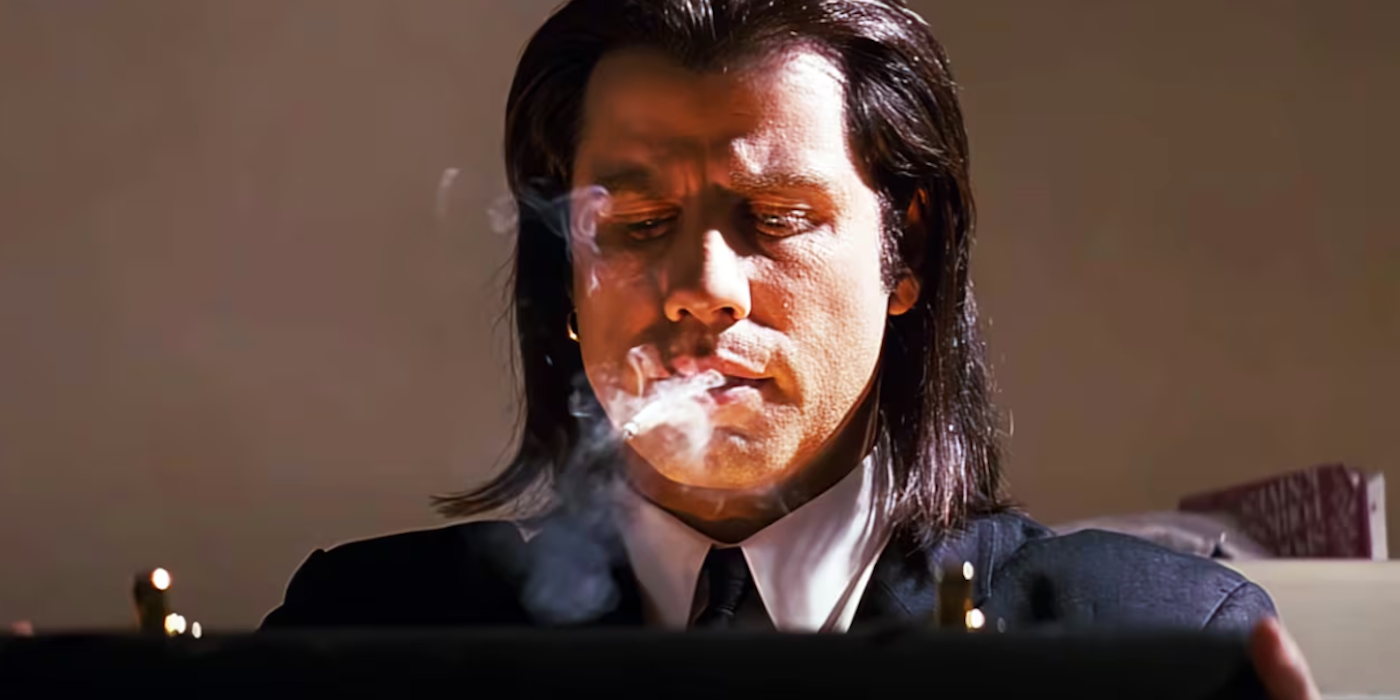The Big Picture
- Tarantino’s iconic overdose scene in
Pulp Fiction
transcends shocking violence with innovative filmmaking techniques and authenticity. - The adrenaline injection sequence in
Pulp Fiction
is rumored to have been inspired by a Martin Scorsese documentary. - Quentin Tarantino’s mastery lies in creating unforgettable moments that stay true to his unique storytelling style.
In the last 30 years of cinema, one will be hard-pressed to find a film more discussed and analyzed, or a film more influential and beloved, than Pulp Fiction. The film, which announced director Quentin Tarantino as a maverick icon of filmmaking, is accompanied by many behind-the-scenes anecdotes and deep dives into the wide range of homages employed by the director. Because the film is a comet of once-in-a-generation type talents, the creative process was certainly fabled. The famous injection sequence was created by a stroke of moviemaking ingenuity that was utterly convincing to viewers.
Uma Thurman’s Overdose Scene in Quentin Tarantino’s ‘Pulp Fiction’ Is Iconic
Pulp Fiction is a bitingly hilarious, arrestingly suspenseful, and imaginatively witty film comprised of an anthology-like structure. The film’s novelistic approach allows it to be seamlessly structured out of chronology. The section consisting of Vincent Vega’s (John Travolta) dinner occasion with his boss’ wife, Mia Wallace (Uma Thurman), takes place after Vincent and Jules’ (Samuel L. Jackson) messy hit-turned-diner-heist mix-up in the timeline of the film. This chapter is as rich and delicious as the $5 shake Mia orders at the ’50s-themed restaurant, where she and Vincent win a dance-off. It captures the postmodern sensibilities of the film and Tarantino’s style in all the best ways, as it has sharp dialogue, a refreshing lack of plot, subtle characterization, and an eclectic selection of diegetic pop music.
For as much as Tarantino is defined by his brutal violence, this sequence is quite gentle and soothing. Of course, when drug consumption is thrown into this night-out, chaos is unleashed. When the pair return to the Wallace house, Mia discovers a bag of heroin inside Vincent’s coat pocket. While he is away in the bathroom rehearsing his goodbye for the night, she overdoses on the supply, leaving her unconscious on the floor. In a frantic plea to save her life and his life from the potential wrath of Marsellus Wallace (Ving Rhames), Vincent storms into the home of his friend, Lance (Eric Stoltz), who sold him the heroin, to think of a way to revive Mia.
After a hectic search, Lance hands Vincent a syringe filled with adrenaline, instructing him to aggressively thrust the needle into Mia’s chest, with Vincent initially confusing it for a repeated stabbing motion. Through all the frenzy and frightening build-up, the film follows through by displaying a heart-pounding sequence of life-or-death when Vincent assertively plunges the syringe into Mia’s heart. She abruptly jumps up from the floor, yelling from a mix of pain and relief. Mia says “Something,” confirming to Vincent and Lance that she is in good health.
Quentin Tarantino Filmed This ‘Pulp Fiction’ Scene in Reverse
In a film with a non-stop barrage of memorable scenes and exchanges, the adrenaline injection in Pulp Fiction is comfortably placed near the top of the most indelible. The daring blend of tone that permeates throughout the narrative is wholly encapsulated in this three-minute sequence. Vincent’s demand for a magic marker and the red dot marked on Mia’s chest is hilariously juxtaposed with the intense medical practice of heart revival. Just as the audience is laughing, Tarantino’s slow zooms on the red dot, the syringe, and Vincent’s distressed face, hitting the viewer with a sense of dread. The camera pays close attention to the sweat pores on Vincent’s face, and the dripping of the adrenaline on the needle. This is some incredible (if not immaculate) filmmaking, right? Well, as it turns out, this piercing moment was filmed backwards.
When filming the revival scene, according to Jason Bailey‘s book, Pulp Fiction: The Complete History of Quentin Tarantino’s Masterpiece, they intended to place a fake chest plate on Uma Thurman for the needle plunge. This is a basic practical device for the effect at hand, but Quentin Tarantino was not satisfied with the potential result. The director called for an audible and filmed this act in reverse. He called for Travolta to start with the syringe in Thurman’s chest area and pull in an upward motion. During the editing process, Tarantino, along with his late editor Sally Menke, reversed the movement, which created authenticity — something he feared was lacking with the use of a chest plate. Rather than a tentative Travolta plunging a needle near another actor’s heart, the aggressive motion in his upswing produced a visceral confrontation of a life-or-death scenario.
Pulp Fiction‘s sound department deserves notable props in the convincing execution of this riveting scene. The resonant thump heard in the collision of Travolta’s hand with Thurman’s chest refuses to let the scene feel artificial. “It’s just the perfect sound,” describes author Bailey. As required in any film, made by a process of manipulation and deception, the actors on the screen sell the mayhem and shocking relief of the moment, including the unsung Rosanna Arquette playing Jody. Early on in his career, Tarantino understood that an effective filmmaking trick should placate the story and emotions of the scene, rather than call attention to itself. In the most fundamental yet intuitive manner, the reversal of the injection is pure movie magic.
Quentin Tarantino’s ‘Pulp Fiction’ Filmmaking Trick (Allegedly) Caused an Audience Member To Faint
While Tarantino is a formalist by nature in his filmmaking style, the revival scene is indicative of his desire for detailed authenticity. To properly capture the grave sincerity of drug overdose and abuse, the director had the actors educated on substance addiction. Tarantino’s awareness of scenes or moments that will linger in the viewer’s mind is why he has remained perhaps the most beloved filmmaker since the release of Pulp Fiction nearly 30 years ago. Tarantino was originally set to portray Lance but decided to pass it up so that he could commit all of his attention to directing the overdose/injection sequence.
The injection scene itself, as well as the contextual circumstances leading up to Mia’s near death, from Mia’s saliva caking around her mouth to Vincent crashing his car into Lance’s house, is filled to the brim with suffocating angst and dread. The overwhelming stress of the sequence was too much for one viewer, as legend states that one viewer at the film’s premiere at the New York Film Festival fainted, forcing the screening to halt. Whoever this unfortunate viewer would presumably confirm, the impact of the injection scene is undeniable. “Once you see that scene, you can never un-see it. It packs one hell of a punch and was so unprecedented,” said film historian Leonard Maltin. Creating unforgettable images and moments is Tarantino’s defining quality, and it’s why his vision has become an invaluable brand for so many cinephiles. Tarantino, known for sampling lines and iconography from other movies into his own, inspired a wave of copycats in the 1990s, yet the syringe scene is “one of the few scenes that no other filmmaker has even tried to copy from Tarantino,” said Tara Wood, director of the Tarantino retrospective documentary, QT8: The First Eight. It is so overwhelming that any effort to replicate it is simply too daunting.
The injection scene was not the first time Quentin Tarantino left audiences aghast at the sight of gruesome blood or intensity. His first film, Reservoir Dogs, features perhaps his most shocking display of violence in Mr. Blonde’s (Michael Madsen) ear-cutting scene. When Wes Craven, the horror visionary behind A Nightmare on Elm Street and Scream, attended the screening of Reservoir Dogs at a film festival, Tarantino felt comfortable that at least one viewer wouldn’t be horrified by his bloody violence. Lo and behold, according to Tarantino, one of the many audience members seen walking out of the screening during the ear-cutting scene was Craven himself. Today, everyone knows what they’re walking into when Tarantino’s credit is above the poster, meaning anyone planning to see one of his films is down to witnessing garish displays of revenge-fueled violence.
What Inspired ‘Pulp Fiction’s Overdose Scene?
According to Bailey’s book, the famous Pulp Fiction is believed to be directly inspired by an anecdote cited by Steven Prince, the subject of the Martin Scorsese 1978 documentary American Boy. The film, packaged in the “Scorsese Shorts” release on the Criterion Collection, is a freewheeling account of Prince, a friend of Scorsese and raconteur of harrowing stories as a drug addict. His tale of injecting adrenaline into the heart of an overdosed woman matches the beats of what occurs in Pulp Fiction. Tarantino’s pool of influences and cinematic sampling is frequently lauded, and channeling an homage to an obscure documentary from the ’70s for a pivotal dramatic scene is the director in a nutshell.
American Boy, the chilling documentary that allegedly inspired the injection scene, acts as a supplemental text to Taxi Driver, which stars Steven Prince as the black market weapons dealer who sells Travis Bickle (Robert De Niro) guns. In Scorsese’s 50-minute documentary, Prince talks about his experiences working as a road manager for Neil Diamond, stories of his tumultuous childhood, substance use, and violent encounters on the streets. He is an intoxicating raconteur, which explains why Scorsese chose to dedicate an entire film to this individual unknown to the public. Scorsese’s camera gazes into his uneasy eyes — not to understand Prince, but to immerse the viewer in his twisted psychology. Prince undoubtedly resonated with Scorsese, a person who struggled with personal demons caused by substance abuse throughout the decade. American Boy, like Taxi Driver, is a disillusioned portrait of a young person struggling to find hope and clarity amid a toxic period in American history.
The injection anecdote mirrors many beats in the Pulp Fiction scene, including Prince’s use of a magic marker to indicate the point of injection, Prince arguing with his friend over who gives the shot, and the emphasis on creating a stabbing motion. Like Lance, Prince had an array of medical supplies at his disposal in case of an overdose. Before Criterion restored and distributed the documentary to a wide audience, American Boy was an obscure artifact that Tarantino would’ve loved to recommend to a customer at the video store. As an avid fan of Taxi Driver, the documentary would’ve been in Tarantino’s wheelhouse. The writer-director has proven himself to be a scintillating raconteur in the press when discussing his work or other movies.
The simple process of filming a sequence in reverse and editing it in real time is a fitting compartmentalization of Quentin Tarantino’s ingenuity. His graceful touches in directing make his films smart and eternally entertaining at the same time. Even though Tarantino’s movies tend to exist in an insular universe, the director has a primal knack for unlocking the audience’s emotions. In this instance, all that was required was a hand movement and slick post-production craft.
Pulp Fiction is available to watch on Prime Video in the U.S.
Watch on Prime Video






